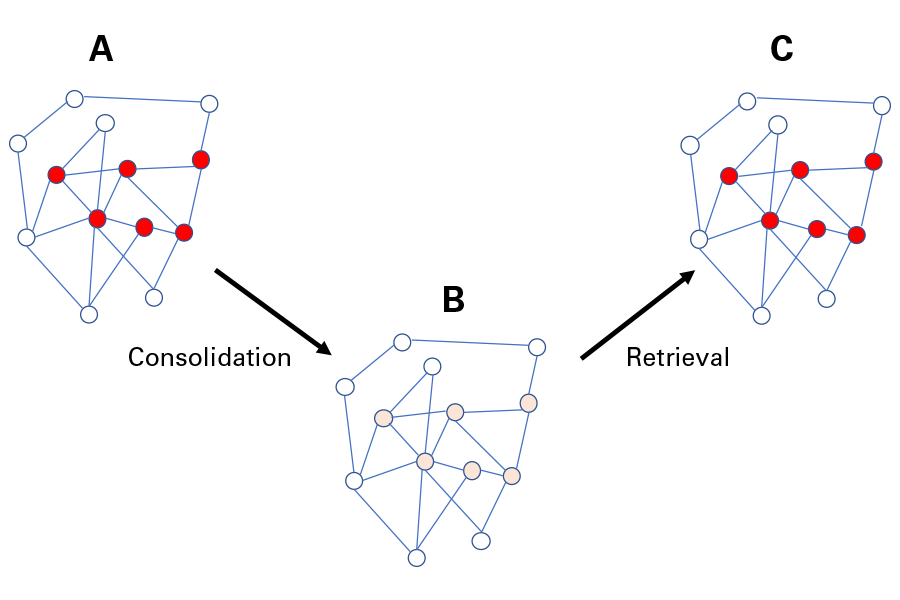DECLARATIVE MEMORY
3.2
Overview of declarative forms of memory
What types of declarative memory exist, and how is declarative memory stored? Read this article by Dominique de Quervain.
Declarative memory refers to conscious and long-term types of human memory. There are two types: episodic memory and semantic memory.
Episodic memory allows you to remember information along with its spatial and temporal context. If you can remember the animation in Chapter 1 illustrating habituation in a snail, and if you can remember when and where you watched it, or if you can even remember what you were thinking while watching it, then this is episodic memory.
Semantic memory refers to remembering information without recalling the context in which you learned it. Remembering that a desk is called a desk is a semantic memory, and remembering the name of the President of the United States in 2020 is a semantic memory. In this case, however, you may have additional episodic memories as you may remember quite a few episodes associated with this President.
How is declarative memory stored on the cellular level? Studies on animals have shown that the same neurons that were involved during memory formation are reactivated if the same information is being retrieved (see Figure 1). Of course, we can only speculate if the same is happening in humans.

Figure 1: Neural model of memory. During a learning experience, a specific neural circuitry (also called engram) becomes activated and encodes the information (A). The red dots illustrate activated neurons. After memory consolidation, this information is stored in long-term memory in a low-activity state (B). When learned information is retrieved, the same neural circuitry becomes activated (C). Copyright: adapted from Josselyn et al., Nat Rev Neurosci. 2015 Sep;16(9):521-34. doi: 10.1038/nrn4000.
What we do know from our own experiences, however, is that remembering can be context-dependent, meaning that you are more likely to remember information if you return to the same context in which you learned the information. For example, you may not be able to recall the name of a person you met during your last vacation at a campsite. When you return to that place, however, the name may suddenly come to you. It is therefore likely that the name of this person is stored along with the context in the same neural circuitry. If the neurons encoding the context are activated by being there, then the neurons storing the name are more likely to become activated too.
Now that we have speculated about how declarative memory is stored at the microscopic neuronal level, we can ask ourselves where it is stored on the macroscopic brain level. You’ll find PDFs of the chapters recommended below on ADAM.
References
Cognitive Neuroscience: The Biology of the Mind; 5th Edition. Michael Gazzaniga, Richard B. Ivry, George R. Mangun; Page 379-382 (excluding “9.2 Memory Deficits: Amnesia”) and page 389 (including “Long-Term Forms of Memory”) – page 390 (excluding “non-declarative memory”).
Lizenz
University of Basel
